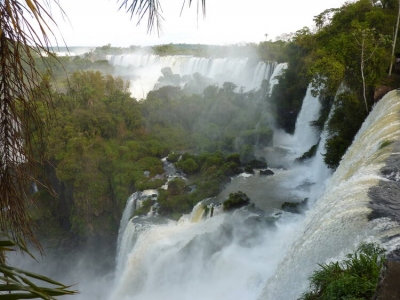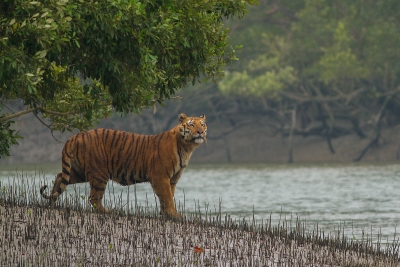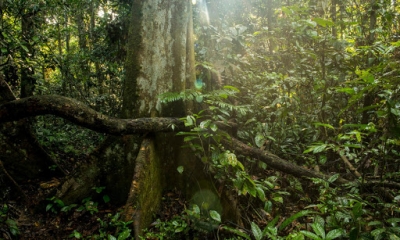What are the threats in the Iguazu National Park in Argentina and the Iguazu National Park in Brazil?

Jointly covering an area of nearly 2,40,000 hectares in South America, the Iguazu National Park in Argentina and its sister park, the Iguacu National Park in Brazil, are regions centred around the spectacular Iguazu Falls. The falls is among the widest in the world, wider than the popular Niagara Falls of North America. The Parks contain remnants of highly endangered rainforests, and were set up in the 1930s to preserve not just the scenic beauty of the falls but also the vegetation and wildlife in and around the region. Huge clouds of spray continuously immerse the several river islands and the riverine forests around. This creates a very humid environment giving rise to fertile and thick vegetation that supports a variety of wildlife. In 1984, the Iguazu National Park was declared a UNESCO World Heritage Site, while Iguacu received the recognition two years later.
Wildlife
The region boasts vegetation that is both rich and varied. The subtropical rainforest surrounding the falls is believed to nurture more than 1,000 species of plants from orchids, pine, and bamboo to palm and even moss. This makes it a perfect haven for wildlife, which is said to be as varied as the vegetation itself. In addition to more than 400 species of birds, the area is said to support over 75 mammal species and countless varieties of invertebrates. Among the mammals that can be spotted here are iguanas, tapirs, giant anteaters, howler monkeys, ocelots (cat species), and jaguars. It's also a spot to see caimans (crocodiles). The birds found in and around the area include swifts, swallows, parrots, herons, toucans, flycatchers, trogons, owls, falcons, kites, nighthawks, thrushes, shrikes, kingfishers, quails, and the near-threatened harpy eagles.
Threats
Changing landscapes due to a variety of reasons such as deforestation and development, tourism, agricultural encroachment, and poaching are among the threats in the region. But dominated as it is by water, the threats on this resource is of particular concern.
Water management: There are dams outside the parks that feed the waterfalls. However, the water flow to the waterfalls is controlled depending on the electricity requirement. For instance, according to the International Union for Conservation of Nature, the water flow during weekends could be lower than ususal due to lower demand for electricity. This fluctuation could affect flora and fauna of the region.
Farmland run-off: On one side of the Iguacu National Park is the beginning of land parcels used for intense agriculture. The practices here involve the use of pollutants such as pesticide. The streams that run through these areas and flowing into the falls carry with them polluted sediments. In the long run, this could affect the plants and animals of the region.
And some good news!
As recently as 2008, only eight jaguars roamed the Brazil's Iguacu National Park.
That's quite a dramatic fall from about 400 in the 1990s near Brazil's border. The cats were pushed to the brink of extinction due to hunting and intense deforestation, resulting in the loss of the animal's habitat. And gradually after 2010, their numbers began increasing, thanks to steps such as setting up of camera traps initiated to tackle poaching. By 2018, the place was home to 28 cats, and the numbers are said to have increased by 2020. But there's a proposal to build a road that will cut the park in two. If this project is implemented, the road will pose a severe threat to the region's biodiversity, and will be a setback to the conservation efforts of the cat.
Picture Credit : Google


